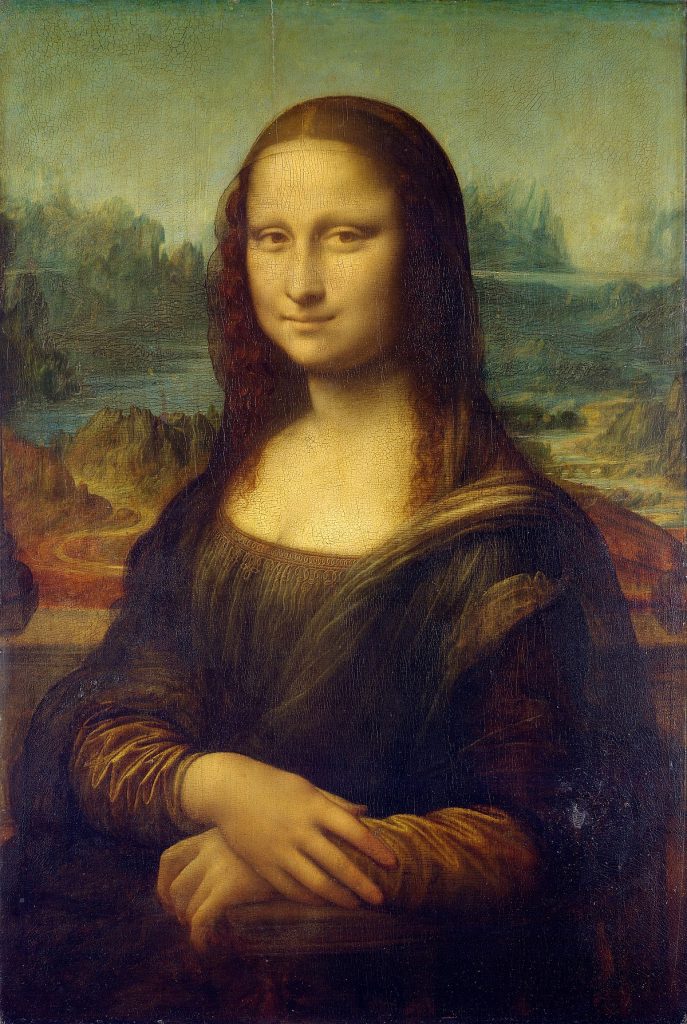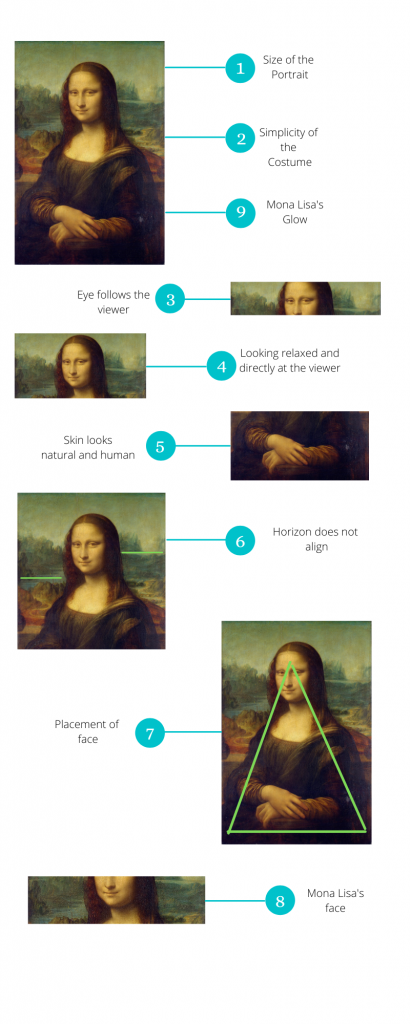
Mona Lisa – Leonardo Da Vinci 1503- 1517


Goal- Get complete attention to face (Convenience of the viewer to look directly into the face without any distraction)
Subject - The viewer
Object- Mona Lisa's face
Blocker - Difficult to create a design on the canvas with too many elements (Difficulty in designing)
Solution - Reduced the size of portrait from a traditional full size to 3/4th for the first time retaining the most important features and eliminating all distractions.
Digitization Principle and ID - Separation - 01000000
Goal- Get complete attention to face (Convenience of the viewer to look directly into the face without any distraction)
the face without any distraction)
Subject - The viewer
Object- Mona Lisa's face
Blocker - Difficult to create a design on the canvas (Difficulty in designing)
Solution - In most of the commissioned portraits the subjects are very flamboyant and wear their best ornaments, but Da Vinci eliminated all ornaments from Mona Lisa to eliminate any distraction from the viewer.
Digitization Principle and ID - Separation - 01000000
Goal - Create an illusion where the eye follows the viewer (Adaptability)
Subject - The Viewer
Object- Mona Lisa's Eye
Blocker - The rigidity of the eye (Strength)
Solution - Da Vinci achieves the Sfumato technique by eliminating sharp edges from the painting. The way he achieves it is by number one preparing a semi-transparent glaze and then he divides the eyes into different sections to identify the areas where there are sharp transitions then he continuously starts applying this glaze to eliminate the sharp transitions and have a smoother gradient and finally if not for years he performed this action for months.
Goal- Mona Lisa must look relaxed (Eliminate Stress)
Subject - The Da Vinci
Object- Mona Lisa's face
Blocker - The women subject's posture does not look relaxed (Ease of Manufacture)
Solution - Da Vinci made Mona Lisa look straight at the viewer unlike other portraits where women never looked at the subject
Digitization Principle and ID - Transformation of Properties - 00001110000111
Goal- Skin and face looks real and human (Precision)
Subject - Da Vinci
Object- Mona Lisa's entire body
Blocker - 1) It is hard to create a real 3D human in a 2 dimensional space (Volume of the Canvas)
2) The large size of the brush strokes to paint the skin of Mona Lisa make it look artificial (Area of the brush stroke)
skin of Mona Lisa make it look artificial (Area of the brush stroke)
Solution - 1) He uses a technique called as Chiaroscuro which in Italian translates to light and dark. When we have a closer look it can be seen that Leonardo chooses to use dark shades of blacks and browns around the face that contrasts with Mona Lisa's lighter skin providing a 3 dimensional illusion.
Digitization Principle and ID - 1) Changing the Color - 000011110000, 2) Mechanical Vibration - 00100000110
Goal- Create an illusion of motion (Difficulty of detecting and measuring)
Subject - The viewer
Object- Mona Lisa and the Horizon
Blocker - It is hard to create motion on a static 2 dimensional Canvas (Volume of the Moving Object)
Solution - The horizon on the back of Mona Lisa does not align which makes the viewer feel that her shoulders are not aligned, but when he find the shoulder is aligned it creates a sense of motion.
Digitization Principle and ID - Asymmetry - 0000101010
Goal- Get complete attention to face (Ease of the viewer to get pulled into the face)
Subject - The viewer
Object- Mona Lisa's face
Blocker - Viewer take time to go around the painting before paying attention to the face (Loss of time)
Solution - Da Vinci used a pyramid style composition by placing the face right at the tip of the triangle that pulls the viewers attention
Digitization Principle and ID - Asymmetry - 0000101010
Goal- Unable for the viewer to guess if Mona Lisa is Smiling or not (Difficulty of detecting and measuring)
Subject - Viewer
Object- Mona Lisa's face
Blocker - If the colors are well balanced are even through the face it is easy for the eyes to detect. (Illumination Intensity)
Solution - Again Da Vinci uses Sfumato and Chiaroscuro technique by creating a dark shadow on her cheek bones. When the viewer directly looks into her eyes, the peripheral vision picks the shadow from her cheek bones and suggest a curvature of a smile, but when we directly look into her mouth, the central vision does not pick the shadow and she isn't smiling, may be smirking at best.
Digitization Principle and ID - Changing the Color - 000011110000
Goal- Da Vinci wanted Mona Lisa to illuminate increasing the visibility (Illumination Intensity)
Subject - Da Vinci
Object- Mona Lisa
Blocker - To illuminate a stationary painting requires an external light source (Use of external energy)
Solution - Again Da Vinci uses Chiaroscuro, mixing light and dark that makes Mona Lisa illuminate from inside as though she has an internal light source.
Digitization Principle and ID - Changing the Color - 000011110000